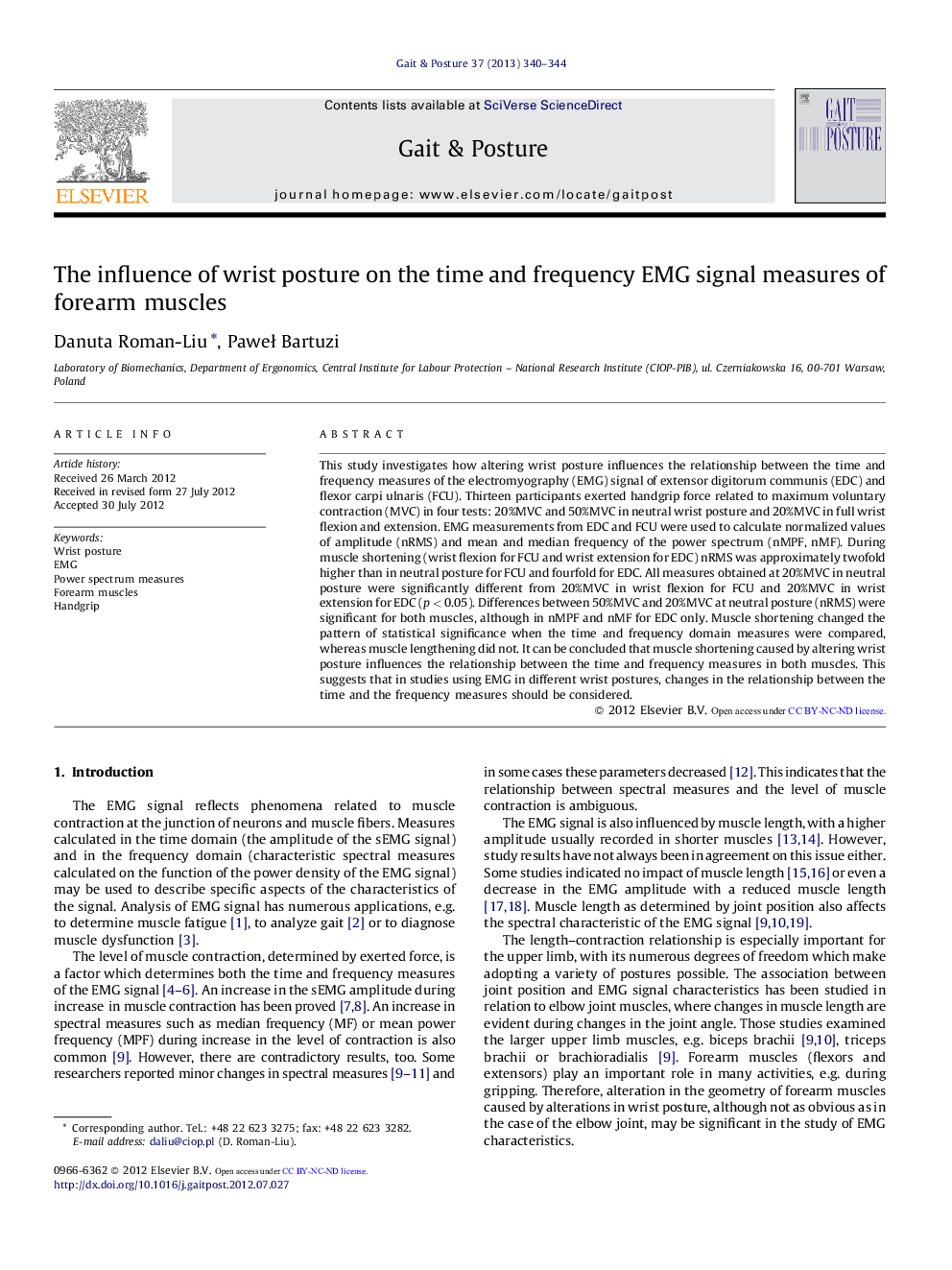| Article ID | Journal | Published Year | Pages | File Type |
|---|---|---|---|---|
| 6207551 | Gait & Posture | 2013 | 5 Pages |
This study investigates how altering wrist posture influences the relationship between the time and frequency measures of the electromyography (EMG) signal of extensor digitorum communis (EDC) and flexor carpi ulnaris (FCU). Thirteen participants exerted handgrip force related to maximum voluntary contraction (MVC) in four tests: 20%MVC and 50%MVC in neutral wrist posture and 20%MVC in full wrist flexion and extension. EMG measurements from EDC and FCU were used to calculate normalized values of amplitude (nRMS) and mean and median frequency of the power spectrum (nMPF, nMF). During muscle shortening (wrist flexion for FCU and wrist extension for EDC) nRMS was approximately twofold higher than in neutral posture for FCU and fourfold for EDC. All measures obtained at 20%MVC in neutral posture were significantly different from 20%MVC in wrist flexion for FCU and 20%MVC in wrist extension for EDC (p < 0.05). Differences between 50%MVC and 20%MVC at neutral posture (nRMS) were significant for both muscles, although in nMPF and nMF for EDC only. Muscle shortening changed the pattern of statistical significance when the time and frequency domain measures were compared, whereas muscle lengthening did not. It can be concluded that muscle shortening caused by altering wrist posture influences the relationship between the time and frequency measures in both muscles. This suggests that in studies using EMG in different wrist postures, changes in the relationship between the time and the frequency measures should be considered.
⺠Wrist flexion causes about twofold higher amplitude in flexors that wrist extension in extensors. ⺠Muscle shortening caused by wrist posture influences the relationship between the time and frequency domain measures. ⺠Differences in handgrip force exerted in neutral posture in time domain measures are reflected in both flexor and extensor. ⺠Differences in handgrip force exerted in neutral posture in frequency domain measures are reflected in extensor not in flexor.
